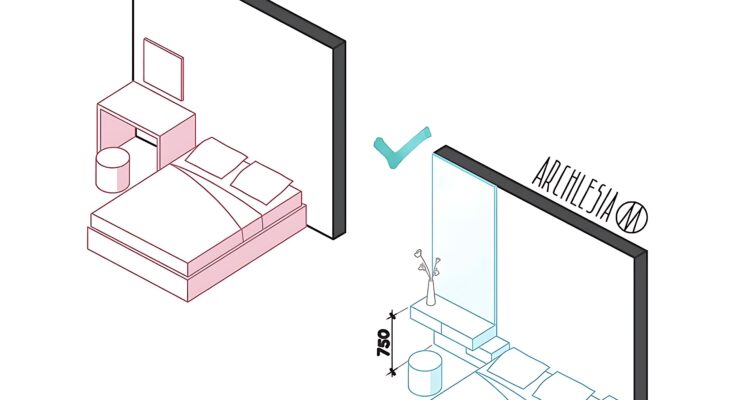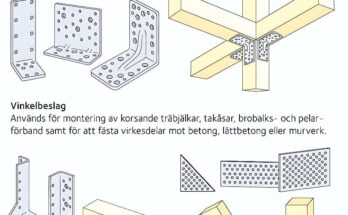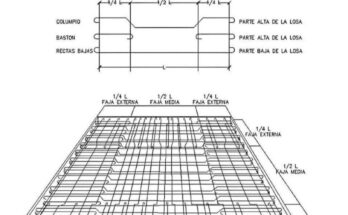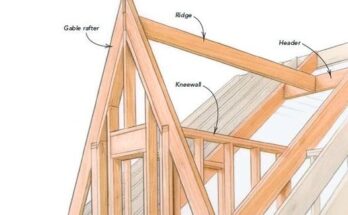a visual comparison of bedroom layout options, focusing on the placement of a half-wall or headboard and its impact on the room’s aesthetics and functionality. Let’s break down the details:
Overall Interpretation:
The image effectively uses a “before and after” approach, showing two bedroom layouts with a slight variation in the design of the wall behind the bed. The “before” layout is marked with a red “X”, indicating it’s less optimal, while the “after” layout is marked with a green checkmark, signifying it’s a better solution.
Key Features and Details:
Two Layouts: The image presents two isometric views of bedroom layouts, each showing a “before” and “after” scenario with minor adjustments.
Wall/Headboard Design:
“Before” Layout (Left): Shows a solid wall behind the bed, with a small framed picture or mirror hanging on it. The wall extends the full width of the bed.
“After” Layout (Right): Shows a half-wall or headboard behind the bed, with a built-in shelf or niche. The half-wall is narrower than the bed and features a decorative element (possibly a plant or vase) on the shelf.
Furniture Placement:
Bed: The bed’s position remains consistent in both layouts.
Nightstand/Dresser: A small nightstand or dresser is placed beside the bed in both layouts.
Stool: A small stool is placed at the foot of the bed in both layouts.
Dimensions: The “after” layout includes dimensions in what appear to be millimeters:
750: Represents the height of the half-wall or headboard.
500: Represents the width of the half-wall or headboard.
Branding: The “after” layout includes the brand name “ARCHLESIA” on the wall, suggesting a product or design concept being presented.
Color Coding: The “before” layout uses pink for the furniture and walls, while the “after” layout uses blue. This helps to visually distinguish the two options.
Checkmark and X: The green checkmark and red “X” symbols clearly indicate the preferred and less preferred layouts.
Inferences and Potential Considerations:
Aesthetics: The “after” layout with the half-wall or headboard adds visual interest and a sense of depth to the room. The built-in shelf provides a decorative element and breaks up the monotony of a solid wall.
Functionality: The built-in shelf in the “after” layout provides a functional space for placing decorative items or personal belongings.
Space Perception: The narrower half-wall in the “after” layout might create a perception of more space in the room compared to the solid wall in the “before” layout.
Branding and Product Placement: The inclusion of the “ARCHLESIA” brand name suggests that the image might be promoting a specific product or design concept related to the half-wall or headboard.
Visual Communication: The image effectively uses visual communication to convey the message, making it easy to understand the impact of the wall design on the bedroom layout.
Overall, this image is a helpful visual guide for understanding the impact of wall design on bedroom aesthetics and functionality. It highlights how minor adjustments can significantly improve the look and feel of a space.



